By Darius Sanai
Editor in Chief
Like art, fine wine and limited-edition watches, classic cars fall into the category of what luxury analysts call “Investments of Passion” – stuff you can enjoy while its value rises. But, leaving aside the question of potential returns, what motivates investors to buy particular assets?
One reason widely cited for the first boom in contemporary art prices, back in the 1980s, was that the new wealthy wanted to show they had earned their money themselves, and not inherited works, or tastes, from their parents.
A generation later, watch guru Jean-Claude Biver cited the same reasoning to me for the taste for contemporary and uber-complicated mechanical watches.
Fashions in fine wine wax and wane: Bordeaux, the materiel du jour just five years ago, is now as out of style as a hipster moustache.
Classic car dealers are fond of telling you that people collect the cars that featured in their bedroom wall posters when they were kids; thus the recent price rises in the likes of Ferrari Testarossas and Lamborghini Countaches, as Thatcher’s children come into serious money.
That’s true up to a point; the advertising creative directors pootling around in 1960s Porsches 911s were surely not born when their cars were.
As to my own Ferrari Testarossa, this was released to the world in a year (1984) when my bedroom posters featured The Clash and the only redhead I was interested in went to the girl’s school next to mine.
Still, one has to abide by cliché, and having acquired three fantastic Ferraris, it was time to target the dream car from earlier in my boyhood. The Porsche 911 Turbo seemed wonderfully glamorous to a small kid in drab 1979 London: a much-faster version of a car that was then a sports car for aficionados, not the daily transport it has now become.
911 Turbos have been made since 1973, and the challenge for anyone wanting to acquire an old, or rather, classic, one, is the slow discovery they are either very expensive, or slightly rubbish, or both. In my search earlier this year I sat inside numerous slightly musty 30-year-old cars, wondering what I was missing. The test drives were no better: old 911 Turbos had no performance at all til the boost arrived, and then what in 1983 was a warp-speed thump, is, in 2015, the acceleration of a fruitily-driven post-nightclub diesel cab which has been chipped. And for a price tag approaching six figures. Hmm.
So, logic led me to a much newer Porsche 911 Turbo which I knew was brilliant, because I had reviewed it when it came out, and was also, by the perverse logic of the classic car market, much cheaper. If you imagine the value curve of classic cars over time describing a V-shape, the 996 model range of the 911, produced between 1998 and 2004, is currently near the bottom of the V.
The “996” model was tainted as a whole by the fact that it was the first 911 with a water-cooled (as opposed to air-cooled) engine, an engine which moreover, proved quite fragile.
But a growing clique of aficionados recently started noting publicly that the engine in the 996 Turbo was unrelated to that in its lesser siblings, and was both hugely reliable and had a racing pedigree. Known as the “Mezger” engine after its original designer, Hans Mezger, it was derived from a design for a Porsche Le Mans car, and is starting to become something of a motoring legend.
So – a brilliant Porsche 911 Turbo, at the bottom of its depreciation curve, with a Le Mans engine. A slam dunk.
The next challenge: finding a good one. Unlike Ferraris, Porsches tend to get driven, so Pistonheads was full of ads for cars with 80,000 miles, or “low mileage” ones with 50,000 miles. “Miles are important” was a mantra taught me by one of my car gurus (a man who has made more out of his car collection than most of us will make in several lifetimes). Low mileage on a Ferrari means less than 10,000 miles; on a Porsche, I decided, it means less than 20,000. And it had to be a manual, not a semi-automatic: I am convinced that as manuals are phased out, they will become ever more desirable.
One day my eye was caught by a very striking newly-advertised car in Basalt Black, with only 17,000 miles, and a host of rather nice factory extras including a carbon-fibre driver zone and Porsche “ruffled leather” seats. It was being sold at a price higher than any other 996 Turbo, by JZM, a renowned specialist in Hertfordshire.
A quick sortie, inspection and drive indicated this was the car. It felt quasi-new, had a full wallet of Official Porsche history, and had plainly lived a pampered life in a garage – even the headlights showed no sign of cloudiness, a hazard of cars living outside. There was a little wriggle room on the price, and Russ Rosenthal, director of JZM, agreed to throw in various bits to make the car absolutely sublime.
One sunny Saturday morning I took the train up to King’s Langley – less glamorous than Barcelona and Rome, where I had bought my previous two Ferraris, but pleasant nonetheless – signed bits of paperwork in JZM’s pristine showroom, and was presented with a very shiny black 2004 Porsche 911 Turbo.
I have driven every recent incarnation of the 911 Turbo extensively, and going back to this model was both a shock and a revelation. What seemed at the time (just over a decade ago) to be an ultra-modern, slick 911 now seems pleasingly old-fashioned. Push it around a fast corner with a bump in the middle, and you are suddenly aware, despite the four-wheel drive, of being in a car for so long known as a ‘widowmaker’ due to its rear-engine exerting extreme centrifugal forces (and spinning the car around).
It’s fast, too – scarily fast at full throttle, full boost acceleration – and unlike the latest models, you can actually feel the road through the steering. It’s an exciting car but with comforts like heated seats, air conditioning and even sat nav.
With perfect timing, 996 Turbo prices have started to rise since I bought mine. I went back to Russ, told him I was writing this for LUX, and asked him for his thoughts. He, in turn, told me that the interest in high-end modern classic Porsches has been a boon for companies like his – they are building new showroom to double the size of their facility – as people invest more money into the best cars. (It’s an old, and true, adage that it’s worth buying the best you can find.)
“There’s a realization that with the latest incarnation of the 911, there’s something that’s basically missing with the more recent cars. There’s a rawness from the 996 Turbo, and as the cars have gotten newer they’ve lost that edge a little bit, they’ve become a little bit softer, a little more refined, they’re not quite as raw and personally, when I jump in a nice manual 996 Turbo now, it just feels edgy and it’s something that’s lost on the later cars. I think there’s a realization, people are starting to understand that.
It applies to the Turbos but also to 911s across the board – with the latest incarnation, there is no low speed fun. I think there’s less feedback, there’s less feeling.”
Couldn’t have put it better myself. Russ says I could already sell my car for 20% more than I bought it; but with both newer and older 911 Turbos costing more, and offering less joy, I am hanging on to it. The 11-year-old me would be delighted.
Once one of the most dangerous destinations on the globe, Colombia is in the midst of a renaissance. Millie Walton discovers the unique charms of the country’s most beautiful city, Cartagena
The sky is a dramatic swirl of pinks and oranges, as we sail into Cartagena, shimmering off the surface of the sea and melting into the blackness beneath. It’s quiet and still, the water looks velvety and bare. Ahead the city glows. It’s not quite what I imagined. I’d seen pictures of homely looking, colourful streets and had expected a seaside shanty, rather than skyscrapers – naïvely, perhaps for Cartagena, I soon learn, is fiercely fashionable and contemporary, bursting with the old world culture I’d hoped for, but with glossy restaurants and luxurious hotels too.
Read next: The green season in the Alps
 Until recently, Colombia was a no-go zone, riddled with stories of violence, drugs and tourist kid-nappings and for many, that image still remains. I was met with wide eyes and warnings when I first unveiled the plans for my trip. As a result, the country has managed to maintain a secret allure and a feeling of wilderness that’s as liberating as it could be slightly bewildering. If you don’t speak Spanish, you’ll find yourself resorting to gestures and broken phrases. Smiling gets you a long way too. Colombians are, in general, the happiest and most helpful nationality I’ve come across; the most endeared to fresh faces and foreign tongues. Fortunately, I spoke sufficient Spanish to find my way to the old town, a Unesco World Heritage site – the place of the cobbled streets, bright blue walls, and balconies overflowing with bougainvillea. It’s particularly beautiful to wander at night when the heat is more subdued and the squares are filled with music and food stands, people dancing and children playing. Or to just sit and watch the night unfold.
Until recently, Colombia was a no-go zone, riddled with stories of violence, drugs and tourist kid-nappings and for many, that image still remains. I was met with wide eyes and warnings when I first unveiled the plans for my trip. As a result, the country has managed to maintain a secret allure and a feeling of wilderness that’s as liberating as it could be slightly bewildering. If you don’t speak Spanish, you’ll find yourself resorting to gestures and broken phrases. Smiling gets you a long way too. Colombians are, in general, the happiest and most helpful nationality I’ve come across; the most endeared to fresh faces and foreign tongues. Fortunately, I spoke sufficient Spanish to find my way to the old town, a Unesco World Heritage site – the place of the cobbled streets, bright blue walls, and balconies overflowing with bougainvillea. It’s particularly beautiful to wander at night when the heat is more subdued and the squares are filled with music and food stands, people dancing and children playing. Or to just sit and watch the night unfold.
T his evening, we wind up in Getsemani, an up-and-coming neighbourhood with a rather sketchy past. Now luxury brands are tiptoeing in with Four Seasons reportedly looking at a property and smart dining options opening their doors. It’s a warren to navigate, but that hardly matters if you don’t mind getting lost. We sip sangria on the tiled rooftop of Malagana Café and Bar to cool down, before heading back to our hotel, Casa San Augstin for dinner at Alma, reportedly one of the city’s best places to enjoy costal Colombian cuisine infused with the head chef, Heberto Eljach’s originality.
his evening, we wind up in Getsemani, an up-and-coming neighbourhood with a rather sketchy past. Now luxury brands are tiptoeing in with Four Seasons reportedly looking at a property and smart dining options opening their doors. It’s a warren to navigate, but that hardly matters if you don’t mind getting lost. We sip sangria on the tiled rooftop of Malagana Café and Bar to cool down, before heading back to our hotel, Casa San Augstin for dinner at Alma, reportedly one of the city’s best places to enjoy costal Colombian cuisine infused with the head chef, Heberto Eljach’s originality.
Read next: An unexpected paradise off the coast of Africa
We ask for a selection of appetisers, too tempted by the menu to be decisive and find ourselves with plates of prawn tempura, hummus – easily the best I’ve ever tasted-, olives and hams. The service is relaxed, perhaps not quite up to fierce and impatient European expectations, but you have to remember you’re in South America. Life has a different pace. I choose fish for my main; plain, steamed with fresh vegetables. It’s not actually on the menu, or something I would necessarily pick as my favourite, but the dynamic chief operating manager at the hotels’ management company, Nicolas Dominguez, insists, telling me I won’t regret it and I don’t. It’s perfect; fresh, light and subtle in flavour, better, as so many things are, without embellishment.
Unsurprisingly, the night leads us to Café Havana, the undisputed favourite spot post 11pm in the city – when the Latin jazz bands start to play and hips sway. Unless you’re British, of course, then the only thing swaying is likely to be your head slightly reeling from one too many shots of the local liquor Aguardiente. It’s a fun place to be, understated and packed with salseros. We find ourselves coerced into an impromptu dance lesson, which leaves us a little flush faced, and exhilarated.
Outside, the streets throb with heat, music and people. We mingle for a while, stretching our Spanish to its limits before slinking back to the calm oasis of Casa San Agustin.
By Darius Sanai
Editor in Chief
Ozone at the Ritz Carlton in Hong Kong, the highest bar in the world, has a long row of bar stools along its floor to ceiling picture window. You settle on a stool, place your Mojito on the counter in front of you, and stare out at a view of… nothing much. Where is Hong Kong? You lower your sights and, far below you, is a meandering stretch of water lined by buildings. The city that takes your breath away with its architectural glamour from the ground is now so far beneath you, from the 118th floor, that it almost loses impact; I was reminded of looking at Paris from a helicopter once, and pondering that human achievement needs to be appreciated at the scale it was created on.
Why do we so love views, and in particular, bars with views? From London’s Shard, you can gaze down from any of three lively and extensive bars at sweeping views of the city, from floors in the mid-30s: a perfect height for admiring a low-rise city like London. In Dubai, you can head to the Burj-al-Arab’s top-floor bar, and perhaps you will be as disappointed as I was at the tawdry collection of plump men and sad Russian hookers desecrating a surreal vista over the inky Gulf. The Rainbow Room in New York is still the most atmospheric bar with a view in the world, wearing its Jazz Age history on its sleeve (and try drinking Martinis there during an electrical storm for a genuine out of body experience).
Read next: Colombia’s quiet renaissance
And perhaps that – slipping out of reality – is why views and bars are so intimately attached. For these watering holes are all in the middle of man-made firmaments, cities aching with crowds and claustrophobia and high anxiety; just as a Beluga vodka Martini provides an escape from the everyday, so does a vista stretching along, above and away. Together, they are an irresistible combination.
And so it was at Ozone. Slowly, the eyes adjusted to the relief map of Hong Kong spread out far below. Even in the gallery facing oblivion, the lighting was (correctly) kept low, so you could start to pick out ships and landmark buildings. The crowd was lively: low on suffocating young gents in finance talking about money markets, high on a blend of skin colours and nationalities, out for fun, not for expenses. And, as a slightly disingenuous counterpoint, Ritz Carlton levels of service, which you somehow don’t associate with somewhere so…groovy. Cocktails and champagne whizzed through the crowds with old-fashioned efficiency and deference. My Moscow Mule was refreshing and long, made even more revitalising by a cool breeze blowing in from the open roof. At 490m altitude, it was a discernible couple of degrees less hot than Hong Kong below.
Read next: Investing in a Porsche 911 Turbo
You exit Ozone via the lobby of the Ritz, a surreal interlude of calm elegance, and outside, suddenly, Hong Kong towers over you again.
If Ozone looks down at the view, Aqua is the view. This spot, a kilometre or so from the Ritz, is on the 30th floor, some 88 floors below Ozone. Also in Kowloon, the fast-emerging half of the city across the water from the historic centre, the city centre of Hong Kong – known to locals as Central – is a bristling wall of multi-coloured towers. In the foreground, fishing boats, ferries and old Chinese junks chunter through the water, which is multi-coloured, from the reflections of the buildings facing. It is the urban equivalent of being in the heart of the Alps, except instead of glacier whites and granite greys, green, pink and silver neon light up the cityscape facing you and the water below.
If you can take your eyes off the view, you will note that Aqua takes its cocktails and food quite seriously. Less of a party spot than Ozone; more of a place for an aperitif that turns into a thoughtful dinner, with good friends. The Moscow Mule here packed a punch, with real ginger and a dab of mint, and one of my favourite vodkas, Ketel One, still made in an old gin pot still. It adds texture and class.
The chef’s selection of sushi came with an instruction not to ask for wasabi as it mars the flavour; the lobster, wagyu beef and toro nigiri were indeed delicate, buttery, nutty, gentle. For all the correct international conversation about human beings desecrating the planet, and the follies of modern urbanity, an evening at Aqua may lead you to conclude that humans are still capable of adding beauty, soul, and delight to the world. And that this bar high in the heart of Hong Kong is one of the very best places to appreciate that.
Meanwhile, a good friend tells me that the bars on the other side of the expanse of water are less spectacular, but more edgy. To be continued..
Ozone, Ritz Carlton, Hong Kong ritzcarlton.com; Aqua Spirit, Hong Kong aqua.com.hk
By Darius Sanai
Editor in Chief
On business in Italy, my route takes me along the coast of the Maremma, the beautiful and curiously unspoiled Tuscan coastlands. Combine the words Tuscany and Mediterranean and images of overcrowded beaches and packed rows of villas interspersed with batallions of ice-cream wielding middle-class children come to mind. But in reality, the Maremma, which stretches down from Pisa towards Rome, is one of the least-populated and least-touristed parts of Italy. Partly, this is because it used to be dominated by marshlands (and was once a malarial zone) and has little of the community history of the rest of Tuscany. But that changed 100 years ago, and the lack of tourism now is a mystery: there are beaches, the pineta (the long stone pine forest that wraps along the entire Mediterranean coast, when it is allowed to), picturesque hills, and now, no malaria.
What the Maremma does have, famously, if you are a wine lover, is some of the most interesting wines in the world. A few decades ago, Mario Incisa della Rocchetta, a member of the Tuscan wine aristocracy, planted vines here and created a wine called Sassicaia, which shocked the then conservative and inward-gazing world of wine. This was a wine from nowhere, which was of the quality of the Bordeaux first growths (the likes of Lafite and Latour). Was it a freak?
Sassicaia came from a sloping benchland called Bolgheri, between the sea and the wonderfully-named Colline Metallifere, the Metallic Hills, that border the area. To prove it wasn’t a freak, Incisa della Rochetta’s cousin, Ludovico Antinori (from a branch of the famed wine family, but not the main branch) planted his own wines nearby and in the early 1980s created another Bordeaux-style wine called Ornellaia. While not quite as celebrated as Sassicaia, it also make its mark at the top (or rather bottom) of the world’s wine lists.
There was a patch of land just outside the original domain of Ornellaia that Antinori planted to Merlot, one of the grapes of Bordeaux, and the dominant grape of two of Bordeaux’s legends, Chateau Petrus and Le Pin. Like a great patch of land in Burgundy, it was planted on a slope, slightly concave, with different soils and bordered by wild forests at the top. Like the land of Chateau Petrus, the soil was mainly clay. One day, Ornellaia’s owners decided to make a separate wine just out of grapes from this new vineyard, which was called Masseto, just for fun. The wine was so good, they have told me, that they decided to continue making it formally, in 1986.
And a legend was born, because Masseto is now the single wine of Italy that can take its place in the world’s private jets with the luxury brands of Bordeaux (Lafite, Petrus, etc) and California (Screaming Eagle, Harlan Estate, etc). There may be other wines of Italy which the professional wine tasters find equally good in some years, but they are obscure. Step into a restaurant in Moscow, Dubai or London and order a Masseto, and your companions, whether or not they are wine buffs, will know the card you have played.
“That is the middle part of the vineyard”, Axel Heinz tells me, inching along a sloped dirt track in his Audi. Heinz, handsome, articulate in several languages, and from some theoretical geographical combination of Germany and Bordeaux, is the winemaker for Masseto and Ornellaia, and has been for the past 10 years. “It is the grand cru of Masseto.” He is pointing to a slight hollow in the gentle slope, where grapes of a deep red hang from rows of green leaves. It’s just a vineyard, but I feel the same frisson as when walking the soils of Chambertin or La Landonne in France. The Mediterranean glistens in the middle distance, at its edge the delightfully empty beach by Bolgheri. Brooding forests rise towards the deep blue sky behind.
![Vigna Masseto 1 (madia)[1]](https://luxmagkop.files.wordpress.com/2015/09/vigna-masseto-1-madia1.jpg) In the winery, a modernist building constructed in 1989 to blend into the earth, in a tasting room looking out over vines and hills and swathed in late summer sun, we taste some Massetos. The 2012, very young, remember, is deliciously, surprisingly open, broad, layered with bright fruit and cedar. It will be released to the world this autumn. The 2010 is older but tastes younger, more tannic, more closed, proud, just revealing hints of its couture gown from underneath a gabardine Burberry trenchcoat. I make a mental note not to drink the cases I have at home until 2020.
In the winery, a modernist building constructed in 1989 to blend into the earth, in a tasting room looking out over vines and hills and swathed in late summer sun, we taste some Massetos. The 2012, very young, remember, is deliciously, surprisingly open, broad, layered with bright fruit and cedar. It will be released to the world this autumn. The 2010 is older but tastes younger, more tannic, more closed, proud, just revealing hints of its couture gown from underneath a gabardine Burberry trenchcoat. I make a mental note not to drink the cases I have at home until 2020.
There are others, but the memorable wine, an astonishing wine, is the 2006. It has the breadth and openness of the 2012 but also a tunnel of depth, you can taste all kinds of bosky, subtle, sexy, bedroom-parlour touches and tones. These can only intensify over time. I make another mental note, to buy a case of the 2006 and drink a bottle a year over the next 12 years. Or to use it as perfume.
As I leave, I ask Heinz about the abandoned farm building next to the Masseto vineyard itself. It had been sealed off with fencing; a suggestion that there were plans afoot. “Yes, we are building Masseto’s own winery there,” he says. “Work starts this year and will be finished by the time we harvest the 2017 vintage”. So, Masseto is going it alone within the portfolio? “Yes,” he smiles. I see the flowering of a new, solo, luxury brand.
Darius Sanai
By Darius Sanai
Editor in Chief
One of the truisms of collecting, whether you are Imelda Marcos hoarding shoes or a 21st century gentleman acquiring classic cars, is that enlightenment comes with possession. You research your subject, speak to fellow collectors, make an acquisition, and, through the circle of friendship and contact endowed by possession, acquire more and better knowledge.
Thus it was with my Ferrari Testarossa. The fabulous looking 1980s supercar is still being fettled to perfection by Joe Macari Ferrari, the celebrated London dealership. Joe Macari has the reputation as one of the most exacting, and most expensive, places to set your classic right. In the course of my conversations with their chief guru (gurus are essential in this game), Andrew Gill, head of aftersales and a man long-term Ferrari aficionados regard with awe, a new dream came into view.
It started when I told him , slightly playfully, that having acquired a Testarossa I was now interested in its successor, the 512 TR, a car that was basically an improved version of the Testarossa: looking just as beautiful (and almost identical), but better to drive. It is also, and this is important for a classic car’s value, rarer. There were 7177 Testarossas made (though mine is one of the 438 UK, right hand drive models), and just 2280 512TRs.
Forget the 512 TR, Andrew said: the 1995-1996 512M was the car to have. “Amazing car. They ironed out all the faults and they drive like nothing else.” Another friend, a very big and respected collector, gave it the nod also and said he’d even go halves with me if I found one.
The 512M was the final iteration of the Testarossa series, and one of the most outrageous looking Ferraris ever. It was given a dramatic aerodynamic makeover which divided opinion at the time (I remember thinking at the time it looked cool and fast, but no longer like a Testarossa) but now looks slick and modern, 20 years on. And its mechanical credentials were legendary. Essentially, the 512M was a racier, lighter, faster and more hi-tech version of the 512TR, down to the engine’s titanium alloy connecting rods and variable pitch valve springs.
It was Ferrari’s flagship. When it came out, it was the fastest Ferrari and for a while the fastest car in the world. It was also a beast, the last mid-engined production 12-cylinder Ferrari, the end of a line that started with the 365 GT/4 Berlinetta Boxer in 1973, with all the flamboyance that implies. Its successors, from the 550 Maranello to today’s F12, all have engines in front and are far more sober looking.
And there were only 501 made, in the world. I really wanted one.
But where to find one? Calls to friends in the Ferrari universe saying I wanted one received replies of the “so does everyone else” variety. Someone knew of one coming from Japan; no, already been sold. A classic dealer had one advertised in southern Germany, but he wasn’t getting back to me and, no, sold weeks ago. A friend in Switzerland knew of a friend who had one, but values were going up and he wasn’t selling. One in Holland: but lots of miles and looked a bit tired. One at auction in London, but it was missing a lot of history. If you don’t have history, you have to take the mileage and the fact that it has been maintained properly on trust.
One evening, an ad popped up on an alert from an Italian website I subscribe to. Yellow 512M, great history and condition, low miles. I rang the number. “So sorry,” said the owner, a gentleman I would guess in his 70s. A dealer had seen the ad hours earlier, come over with cash (more than 200,000 euros in cash!) and taken the car. When dealers rush for cars, you know they’re hot.
Two days later, on a Friday, another alert, this time from a Spanish specialist site, a car in Barcelona. Pictures, obviously taken by an amateur, of a car on a sunny hillside. Ferrari Red (rosso corsa) with red and black carbon fibre racing bucket seats, a rare option. Only 12,000 miles, a 1995 car, always serviced at a main dealer. An even better car. I dropped the iPad and rang. “Yes, there are lots of people calling,” said a distinguished voice in Spanish. “Dealers, who don’t even speak Spanish!” (a disgusted tone). “I am going away until Tuesday night”. The ad only stated a landline, which meant nobody would get through to him until then.
I’ll meet you on Wednesday at 9am at the Ferrari dealership in Barcelona, I said, to get the car inspected and seal the deal. He agreed. Nobody would be able to get there before me, or would they?
On the Tuesday evening, I flew out to Barcelona and settled in at the Majestic. I had to finish some work, and then drank a couple of cocktails by the (closed) rooftop pool. What if he didn’t show up? What if someone else had managed to get hold of him and put a deposit down sight unseen on the phone, common with such desirable cars? What if the car was not as good as advertised? Did I really want to spend this money on a car which, until last year, had just been another old money pit? Was I ahead of the market or a sucker? A. wasn’t answering his phone.
At 9 the next day, A. (as I will call him) was there, besuited, with his 512M already up on a ramp at Ferrari Barcelona. It looked so clean and barely used, underneath and above. “We service all his Ferraris,” the mechanic told me. All? What others does he have? “A F50 and a 550 Maranello,” he said, naming more than a million euros worth of car. “And then there are all the Porsches and the Aston DB6 and the Rolls…”
A., a scion of Barcelona society in his late-sixties, was delightful. I looked over the car in detail, a list of tips in my hand from both Andrew Gill and the experts on the Ferrarichat online forum. We agreed a price, subject to a full formal inspection by the dealership. I gave him a copy of one of my magazines containing a feature I had written about Ferraris. He zoomed off and came back with a full set of bespoke Schedoni luggage for the car, which hadn’t been mentioned before (market value, more than £10,000). He threw it in for free. We left the 512M with the dealership and he took me for the finest paella I have had, and then a tour of his cars at his stunning modern hillside home (next to Neymar’s house) and in his storage garage. The 512M was neither the fastest or finest of his possessions. We spoke in a blend of French and Spanish, and I pondered that any English or German dealer who had rung A. would not have been able to communicate. He received several messages about enquiries about the car.
The dealership rang me. “We’re emailing the results through,” they said. These included a compression test, which doesn’t lie. It was perfect; as beautiful an example as you could dream of. We shook hands, I transferred the money and boarded a flight to Switzerland for a business meeting the next day, with the elegant gentlemen of Ferrari Barcelona looking after the car for us. A couple of weeks later, my 512M arrived in Britain. I entrusted it to Roger Collingwood of The Ferrari Centre in Kent, a former racing mechanic so honest he needs to be reminded by customers to send his invoices. It passed its UK inspections with flying colours and received a number plate.
I took the train out to Kent to drive it back to its London garage home. The flat-12 engine rumbled behind my ears like a pair of growling hunting dogs. The steering told you everything about the road and more – it has no power assistance and is heavy and astonishingly direct and real compared to today’s cars. The gearlever is grumpy and obstructive when cold but slashing it through the bare metal gate is a joy in itself on the go. The carbon fibre seats are amazingly comfortable. At speed, around corners, it feels on edge (with a big 12 cylinder engine behind you) alive like no modern car and just a little bit dangerous – it has no traction control of any kind, apart from the driver. And the howl when you take those lightweight pistons towards the top of the rev range is properly frightening – you feel this is why they made the car. Even idling, you are always aware of those two angry mastiffs behind you – I keep wondering if a superbike is dawdling by the rear three quarter flank of my car, only to realise it’s my own engine.
While it is now 20 years old and not as fast as any of today’s Ferraris, it feels very fast because it’s so raw, and it is still a properly quick supercar (200 mph, 0-60 in 4.1 seconds).
Its value has also risen 50% in the six months since I bought it. A is happy, as I paid a strong price at the time; we went to his wedding last month. I don’t intend to sell it anytime soon; it is one of the greatest Ferraris ever made, and I recommend tracking down one of the remaining 500 or so in the world before the prices hit the moon.
Meanwhile, the bug hit again. The 512M’s successor, the 550 Maranello of 1997, was as different as it is possible to be: front engined, understated, wearing a Milanese suit rather than a Versace shirt and Gucci loafers. But a magnificent car, even more powerful, and apparently much easier to handle. Prices seemed very low. With two outrageous Ferraris for those Versace moments, I needed something sober suited and sleek: bespoke Zegna. Time to start looking for one.
(to be continued…)
Darius Sanai
The Alps are at their most sublime when the sun is warm, the snow has given way to meadows, and the crowds are far away, says Darius Sanai. Here we focus on two legendary resorts which really come alive in the summer
Zermatt: The high peak paradise
Mention a luxury chalet in Zermatt to anyone with an ounce of snow in their blood, and they will immediately start to fantasize about the glorious off-piste of the Hohtälli, the vertiginous black runs down from Schwarzsee, the myriad routes down the back of the Rothorn. For chalets and Zermatt mean the ultimate in he-man (and she-woman) ski holidays on the highest runs in the Alps, for groups who can then relax in a super- luxe communal chalet and share stories.
There is, however, another and very different experience to be had in a chalet in Zermatt. Mine started with sitting outside on a broad balcony in a polo shirt, gazing up at the green foothills and rocky high peaks, birds and butterflies drifting past. The summer sun is strong here, but in the mountains the air is dry and there is always a hint of the glaciers in the breeze, so you never feel like you are sweltering.
Zermatt is a glorious place in the summer, as its soaring peaks – it is surrounded by 30 mountains of over 4,000m in height, more than any other village in the Alps – are less frozen, less forbidding, more open to being explored than in the ski season. And while the village is the number one Alpine destination for summer holidays, it is still less crowded than in winter, when the entire populations of Moscow and Mayfair flock to the village under the Matterhorn.

Peak Season:
The village of Zermatt wears a cloak of green throughout the summer months, but the jagged Matterhorn retains its mantle of snow and ice
Chalet Helion, run by uber-swish chalet company Mountain Exposure, is one of the ultimate incarnations of its breed. Technically, although it’s a wood-panelled, chalet-style building, it’s not actually a chalet; rather it is an extensive lateral apartment running across the breadth and length of the construction. You get there via a three-minute taxi ride or five-minute walk from the main train station. Cross the rushing green Zermatt river, walk past the art nouveau-style Parkhotel Beau Site on a little knoll, and there it is.
On walking into the apartment, turn left into a vast, open-plan living room/dining room/kitchen area, with space to seat a party of 20. It sleeps eight people and is well organized for entertaining, as the living quarters can be closed off from the dining and chilling space, where there is also a cosy study.
Draw back the curtains and, beyond the broad balcony terrace, is the most magnificent view in Europe: an uninterrupted vista of the Matterhorn. It rises above the end of the valley like some supernatural thing, a giant, quasi- pyramidical, almost vertical rock formation, covered in thick snow and ice, surrounded by glaciers, standing above other mountains that are green with friendly summer pasture. It looks down with disdain, mocking us mere humans with our pathetic summer activities.
It is also mesmerizing. From the balcony at dawn, it glows rose like a Laurent-Perrier champagne; in the middle of the day, its least forbidding time, it is all silvers and whites; at dusk, it takes on its most frightening aspect, its darkness making you think of all the climbers who have fallen thousands of metres to their deaths on it. My father climbed the Matterhorn when he was young and made me promise I would not do it; he can rest assured from his own place in the skies that there is no danger of that.
The Matterhorn is Zermatt’s brand, adorning every poster, postcard, sticker and banner. But development means it has become harder and harder to find a room with a view of the mountain itself rather than a view of the newest building. And this is what makes Chalet Helion so special, as its vista, from a gentle slope above the village centre, is uninterrupted.
But the mountain isn’t the sole reason to go to Zermatt. There’s only a certain amount of time you can stare at the almighty, after all. Just down from Chalet Helion is the lift system that takes you up to the Sunnegga-Rothorn mountain. A train tunnel bores through the bare granite and, three minutes later, you emerge into a wonderland.
Sunnegga, the first stop, is above the treeline and at the top of the steep foothills that border one side of the village. From here, unlike down in the valley, you see that the Matterhorn is just one of dozens of massive, icy, knife-edged peaks above the resort. Directly in front of you rise four 4,000m-peaks, culminating in the Weisshorn, shaped like a gigantic shark’s fin and, at 4,512 metres, even higher than the Matterhorn. To the left, snowy pinnacles hint at even higher summits. To see those, we climbed into the
cable car to the very top of this lift system, the 3,100-metre high Unter Rothorn (recently rebranded as just Rothorn, but as there are three variations on Rothorn around here, I prefer to stick to its original name). We stepped out into eye-watering sunshine and crunched onto a patch of snow left over from winter: 3,100 metres is high indeed. The peeking peaks from the previous stop now revealed themselves as six huge mountains layered in unimaginably thick snow and ice, rising above the Gornergrat ridge in between us.
The highest of these, Monte Rosa, looked like a giant’s meringue, massive but without the character or shape of the others. At 4,634 metres, it makes up in heft what it lacks in shapeliness: you can make out the other face of Monte Rosa quite clearly when standing on the roof of Milan’s cathedral, more than 100 miles away. (As a comparison, Britain’s highest mountain, Ben Nevis, is 1,343 metres, and Germany’s highest, the Zugspitze, is 2,963 metres.)
Zermatt is famed for its mountain restaurants, but that morning I had gone shopping at the local Coop (which in Switzerland means amazing fresh, local ingredients, from radishes to mountain cheese), and we picnicked instead, sat on a rock by the side of a pewter-coloured lake, in which the Matterhorn was perfectly reflected. Here, at Stelisee, you are at peace with the mountains above and the valleys below. The sun bakes you, apart from an occasional wisp of wind which wafts down from the glacier like nature’s own cooling mist spray. Butterflies, bees and millions of grasshoppers play among the fields of wildflowers all around. Even the Matterhorn from here looks less dark, more pretty. Never has an air-dried beef sandwich with freshly grated horseradish tasted more perfect.
Walking down, we came across another lake, Leisee, deep green in colour. Fittingly, amid the sea of wildflowers surrounding this one, was a confederacy of tiny green frogs. Not much bigger than an adult fingernail, you had to be careful not to tread on them as you walked along the path.
Dinner in Zermatt comes with reservations in both sense of the word: you need to book, as the place is heaving in season; and you always feel slightly annoyed that the restaurants, however well deserved their culinary reputation, have no Matterhorn view, as they are clustered in the village centre.
This was a further joy of Chalet Helion. On most nights we cooked, and ate and drank local Valais wine (vibrant Fendant whites, deep Cornalin reds) on our balcony or at the dining table with our private, picture window view of the mountain fading to grey. After which, a Havana on the balcony: one clear night we could make out the helmet lights of the night climbers on the sheer rockface of the mountain.
On one evening, Mountain Exposure’s charismatic owner, Donald Scott, a British snow- phile who came to Zermatt and never left, brought one of the company’s chefs to create us a fabulous, complex Swiss mountain meal. Our dining area was transformed into a restaurant, an option open to any guest who pays.
We will certainly be back, for the view from Chalet Helion, and its entire experience, is as eternal as it is wondrous.
Chalet Helion is available summer and winter from Mountain Exposure, mountainexposure.com. For general information, see zermatt.ch
SPA AT MONT CERVIN PALACE
For decades Mont Cervin Palace has been the byword for glamour for all visitors to Zermatt. A well-kept secret is that this five-star hotel in the heart of the village has a beautiful, 25-metre indoor pool, and an outdoor spa pool and garden as part of its hidden annexe. The garden and outdoor pool (which is open year-round) have a dramatic view of the mountains from the village centre, and the indoor pool and hydrotherapy area are the best places in the valley to retreat to when the weather closes in – or if you want some cross-training exercise after a day’s skiing and hiking. The best news? They are open to non-residents, for a fee. montcervinpalace.ch
Gstaad: Alpine chic with a twist
Gstaad has a reputation as a gentle place, perhaps more suited to high net worth retirees wanting a peaceful and safe place close to their money (in Swiss bank accounts) in which to holiday. But that reputation vanished before my eyes as soon as I set foot into the garden of The Alpina hotel.
Before me, a long outdoor pool, lined by teak decking and a few (not too many – this is Gstaad) sunloungers. Around it was a garden in full bloom; beyond that the rooves of this traditional village (The Alpina is on a small plateau above the centre), all framed by an amphitheatre of forest, meadow and mountain. Far away were high rocky peaks and glaciers. It was hot in the sun, and a first morning spent in and by the pool, accompanied by the occasional cocktail, was bliss due to true exclusivity. At that moment, in any number of luxury Mediterranean hotels, super- wealthy guests would be jostling for space by the poolside in neat rows, trying to attract the attention of overstressed serving staff, waiting far too long for their drinks to arrive.
We, on the other hand, had the attention of numerous waiters (there were a few other guests, but more than enough staff to deal with them) and sufficient space to have a conversation about my tax affairs on my phone with no danger of anyone overhearing (not that I would be so vulgar).

Suite Dreams:
Swiss artisans have created the interiors at The Alpina, using local stone and period woodwork
Wandering inside a neat little chalet, we found stairs to take us down to a cavernous and exquisitely finished spa area. One corridor led to a salt room, where even the walls were seemingly made of salt, another to the treatment rooms, and another to a quiet cafe area lined with photographic books and jugs containing various herb-flavoured waters.
Beyond that, another pool, inside the cavern, some 25 metres long, bookended by spa pools and crowned by a glass cupola looking into the garden above. If the weather ever failed, this would be the place to spend the day, as we discovered the next day when a thunderstorm swept in. The Alps form the border of the hot Mediterranean climate zone and rainy northern Europe, and you can feel the battle between one and the other, day by day.
When the sun reappeared we headed up the round, green mountain facing us – more a fairytale hill than a dramatic Alp – in a gondola and found a large chalet restaurant, Wispile, serving fondues made with cheese from the chalet’s own cows, clearly visible in the pasture above. The view was over the village and the wooded foothills and forests beyond, out towards Lake Geneva. Wispile also has a menagerie of animals, from llamas to pigs and goats, which families can help to feed.
If Wispile is all that you expect from a Swiss Alpine hut, the evening offering at The Alpina is something else entirely. The owners of this new uber-luxe hotel, which was clearly built to compete with, if not actually outdo, the celebrated Palace hotel down the road, wanted the best of world cuisine in a village not renowned for its cosmopolitan food offerings.
For MEGU, a Japanese restaurant in the heart of the hotel that is an outpost of the celebrated New York establishment of the same name, they enticed and employed master chefs from Japan. It shows: the sushi was magnificent. A taste that I will try and remember for the rest of my life is the signature crispy asparagus with crumbed Japanese rice crackers, chilli and lemon. The Oriental salad (various Chinese vegetables, nuts, seeds, sashimi of Dover sole and sesame oil) was also unique and memorable. Stone-grilled wagyu chateaubriand with a fresh (not powdered) wasabi soy reduction was also fabulously vibrant. I’d take MEGU over Nobu and Zuma, if only it were in London.
There was also Sommet, the hotel’s other signature restaurant, which holds two Michelin stars. It is hard to tell which is more important. Sommet has the better location, a big contemporary dining room with a view of pool and mountains, and seating on the broad terrace; MEGU is the cosy space behind the bar at the heart of the hotel. Sommet has 18/20 from the Gault et Millau guide and is refreshingly fuss- free. The seabass with artichokes, hazelnuts and spinach had simple, highly defined flavours, and the organic salmon steak with tomato and olive risotto was cooked with great attention to detail. Sommet’s chef has the confidence to let his quality ingredients, combinations and technique speak for themselves, and this is contemporary fine dining of the most appealing kind.
These were two of my most notable meals of the year, anywhere in the world, to the extent that I would make a journey to the hotel just to eat there, even if I couldn’t stay there. But for overall experience, they can’t quite match that of sitting by the outdoor pool, looking at the glowing green of the Alps, under the deep blue of the mountain sky, in utter peace, while sipping a perfectly made margarita, served by an unhassled staff member who knows exactly when to ask whether I’d like another one. That may not have been the first line of the owners’ business plan when they opened The Alpina, but they have succeeded in making Gstaad a true summer holiday destination beyond, I suspect, even their wildest dreams.
Driverless cars – this year’s big thing in automobiles – trade emotion for efficiency. Can the company that invented the motor car combine both? Caroline Davies speaks to Mercedes- Benz’s Dr Thomas Weber to find out
The world of autonomous – or, in lay parlance, self-driving – cars, which has been on the horizon for a few years, is finally threatening to become reality very soon. Self-accelerating, self-braking, self-navigating models will soon follow today’s self-parking models in to the marketplace. But motoring is, for a significant minority, more than just the least painful way to get from A to B: in the world of luxury, a car is an end in itself, not a utensil. And for them, Mercedes-Benz has created a striking concept car, snappily named the ‘F 015 Luxury in Motion’.
Not available in a showroom near you ever – its purpose is as a debating point and research showcase – the F 015 re-conceptualizes the purpose of a car. Tellingly, rather than reveal it at a motor show, Mercedes-Benz selected the Consumer Electronics Show (CES) in Las Vegas, the world’s biggest tech fest: a signal that this is not just a car. It is also the company’s riposte to latent threats by Apple, Google and other tech firms that they will disrupt the world of cars like they disrupted the world of the PC.
At the CES I spoke to Thomas Weber, effectively the global number two at Daimler, the parent company of Mercedes-Benz, about why they had developed it. “We asked ourselves, ‘What is luxury [motoring] in the future?’” he said. “It is time, space and access to information.” That was the driving force behind the future driving concept.

Meet the Mercedes: Dieter Zetsche, head of Mercedes- Benz and chairman of Daimler, unveiled the F 015 in Las Vegas
As the executive board member in charge of research and development for the world’s leading luxury car company, Weber’s view is carefully observed by industry watchers. The monolithic design of the car gives passengers the largest possible space, he says. The inside, upholstered in white leather and open-pore walnut wood, has four rotating chairs, allowing guests to look at the road or each other. The door panels are touch screen, allowing passengers to call up contacts, information, the route, music or points of interest along the way. Unlike the original cars Google produced, there’s a steering wheel, should you feel the need to take over. Also unlike Google’s cars, it feels like a car, not a disposable electronic device.
The car is, in part, a response to what Mercedes-Benz feels will be one of the major issues of the future: a burgeoning urban population. As the world moves to live in the city, roads will become increasingly congested. An automated car provides two solutions to the problem. Firstly, it gives the passenger time back, free to do what they want instead of driving. Secondly, it allows for cars to be shared; once a car has dropped off one passenger, it is free to collect another rather than sit in a car park.
“If you want to create more than only a car, then you have to do more than only look at the car,” says Weber. “You have to ask what a city in 2030 will look like. We know that more than 50 per cent of all people will live in crowded urban areas. Then what happens? What will the customer do in their car? You have to understand their lifestyle. The car is part of your daily life, your digital companion.”
Weber believes that while a self-driving car from Mercedes may be an efficient space when it is driving itself, it will still provide pleasure when you want it to, unlike other modes of transport. He does not believe that driving will become obsolete.
“[Transport autonomy] will happen in taxis and trains but not in the car,” he says. “It is comparable to skiing. Everyone takes the lift to the top, but the enjoyable part – downhill – you want to do yourself.”
Admittedly, a machine would in most circumstances be a better driver than any human; they don’t get tired, distracted or forget which side of the road they should be on. Accidents could reduce to near zero; insurance, too. “We need autonomous driving to realize our vision of accident-free driving,” says Weber. “With sensors and these machines we can mitigate most of the critical situations where accidents happen.”
There are still issues – technological and legal – to iron out before these cars will be on the road. “There is a concern that some of our colleagues will do certain steps too early and terrible accidents could happen based on poorly realized autonomous cars,” says Weber. “If that happens then we could be forbidden from developing these cars. We need to do everything possible to mitigate these early failures.”
One such issue is strong internet signal; creating a bandwidth strong enough to control a full highway requires creating this digital infrastructure. Manufacturers will also have to wait until the legal framework is in place. Who is to blame if an autonomous car hits a pedestrian? What if a car was faced with a moral dilemma: for example, a mother pushes a baby in a pram into the path of an autonomous car on one side, as a cyclist is overtaking it on the other. Which way should it be pre-programmed to go? An autonomous car, for all its computing power, will not make decisions of its own: it will do what it has been told to do.
Weber is keen to have these discussions early. “Legal discussion, social discussion, acceptance discussion – these things take time,” he says. “But we have cars on sale with first situations of this technology. We have a road map.” The first autonomous cars will probably be developments of today’s self-parking cars, with drivers taking control at times.
Legislators have already started thrashing out these details and manufacturers have begun to steadily introduce autonomous elements, easing the population into the idea with the expectation that fully autonomous cars will be on the road as early as 2025. For many, that remains a frightening thought, but we have been entrusting our lives to aeroplane autopilots for years. At least style needn’t be a worry; with Weber in charge, autonomous cars will have plenty of panache.
Monaco is the place where yachtsmanship and money combine in an intoxicating and irresistible blend. Millie Walton is charmed by the sailors and owner of Maserati’s record-breaking yacht
The crew of the 70ft Maserati Yacht VOR70 are sitting around a table at Bistrot Le Bouchon, one of Monaco’s more understated restaurants. They have just sailed in from Barcelona and are sporting bodily evidence of the journey – a torn-off fingernail here, a badly swollen wrist there. But they speak with excitement about the boat’s ambitious 2015 racing programme, which culminates in the infamously challenging Rolex Sydney–Hobart Yacht Race, between mainland Australia and Tasmania.
Our dinner is an intimate introduction to the team before the main celebratory event, an uber-powerful affair featuring the crew of the yacht, the owner of Fiat, Maserati and Ferrari (the companies that is, not just single cars: that would be unexceptional in Monte Carlo), and one of Monaco’s royals – but more on that in a moment.
The crew are a fresh-faced gang from all across the globe: Andreas Axelsson (Sweden), Guido Broggi (Italy), Andrea Fantini (Italy), Oliver Herrera Perez (Canary Islands), Boris Herrman (Germany), Francesco Malingri (Italy), Gwen Riou (France), Corrado Rossignoli (Italy) – all picked for their expertise by Milan-born skipper Giovanni Soldini. The next 12 months will be a series of record attempts, including the San Francisco–Shanghai sprint in May, which retraces the 7,000-mile route across the Pacific Ocean used by the legendary clippers in the mid-19th century – there’s no room for error.
Soldini himself sits quietly in the midst, his salted black hair and sun-burnished skin betraying his extensive experience at sea, which includes two single-handed round-the-world races, one of which he won in remarkable fashion after making a diversion to save fellow competitor, Isabelle Autissier, who had capsized in the dangerously freezing waters. He was later awarded the Legion d’Honneur in Paris and the Medal of Honour in Rome. In total, he boasts more than 40 ocean crossings and is one of the few allowed to wear a gold ring in his left ear – a privilege granted only to sailors who have rounded Cape Horn, the southern-most tip of America.
At the event the next day, Pierre Casiraghi, the youngest son of Caroline, the daughter of Monaco’s late long-time ruler Prince Rainer and his wife Princess Grace, holds forth. Pierre’s father is the late Stefano Casiraghi, who was tragically killed, aged just 30, when his powerboat overturned during a race on the French Riviera in 1990. Despite this, Pierre is clearly unfazed about taking to high-level water sport, having already had a successful on-board experience in the Cape2Rio race last year. He marvels at his captain’s ability to maximize each of his crew’s individual talents: “He’s a very kind and generous man. He makes everything seem so fluid”.
The boat’s owner is John Elkann, chairman of Fiat Chrysler Automobiles, an empire which also encompasses Maserati and Ferrari. Elkann, who has just arrived from London, is smartly dressed in a blue suit with an eccentric bright orange waistcoat revealing his youthful approach to all things in life, not only business. He’s quietly spoken, giving an impression of humility, as he recounts the “unforgettable experience” of crossing the Atlantic from the Canaries to the Caribbean in 2009 with Soldini. He speaks of an irreplaceable bond with the crew, the type of which can only be formed through shared struggle and perseverance.
Together, they have come to be recognized as one of the world’s most successful and impassioned racing teams, extending Maserati’s market quite literally to further seas. “It’s an exciting and challenging year for the VOR70 and for Maserati,” explains Elkann. “After growing sixfold in terms of volume and luxury market coverage in the last two years, we will be looking to keep that momentum going, especially in the US and Asia.”
In keeping with its trident logo, most commonly associated with Neptune, the god of the sea, the Maserati yacht aesthetically evokes a sense of power and awe, fitting with Maserati’s reputation for exceptionally beautiful designs. The interiors of the monohull, however, tell a different story – one of hard work and competitive sportsmanship, with basic bunk beds, little to no lighting (it takes a sure-footed sailor indeed to navigate through the cubbyholes) and a very simplistic kitchen. No bathroom, no luxuries – a giant leap from the plush extravagance of the shining new Yacht Club de Monaco, where Maserati has an exclusive lounge space as the club’s official car. The challenging aspect of sailing though, Elkann explains, “perfectly expresses the values of passion, emotion and innovation that are intrinsic to Maserati”. Select customers can see this themselves on the unique Drive&Sail experience: sailing on the Maserati VOR70 with Soldini, and then driving the latest models in the Maserati range. Surf and turf indeed.
Recent Posts
Archives
- November 2025
- October 2025
- September 2025
- August 2025
- July 2025
- June 2025
- May 2025
- April 2025
- March 2025
- February 2025
- January 2025
- December 2024
- November 2024
- October 2024
- September 2024
- August 2024
- July 2024
- June 2024
- May 2024
- April 2024
- March 2024
- February 2024
- January 2024
- December 2023
- November 2023
- October 2023
- September 2023
- August 2023
- July 2023
- June 2023
- May 2023
- April 2023
- March 2023
- February 2023
- January 2023
- December 2022
- November 2022
- October 2022
- September 2022
- August 2022
- July 2022
- June 2022
- May 2022
- April 2022
- March 2022
- February 2022
- January 2022
- December 2021
- November 2021
- October 2021
- September 2021
- August 2021
- July 2021
- June 2021
- May 2021
- April 2021
- March 2021
- February 2021
- January 2021
- December 2020
- November 2020
- October 2020
- September 2020
- August 2020
- July 2020
- June 2020
- May 2020
- April 2020
- March 2020
- February 2020
- January 2020
- December 2019
- November 2019
- October 2019
- September 2019
- August 2019
- July 2019
- June 2019
- May 2019
- April 2019
- March 2019
- February 2019
- January 2019
- December 2018
- November 2018
- October 2018
- September 2018
- August 2018
- July 2018
- June 2018
- May 2018
- April 2018
- March 2018
- February 2018
- January 2018
- December 2017
- November 2017
- October 2017
- September 2017
- August 2017
- July 2017
- June 2017
- May 2017
- April 2017
- March 2017
- February 2017
- January 2017
- December 2016
- November 2016
- October 2016
- September 2016
- August 2016
- July 2016
- June 2016
- May 2016
- April 2016
- March 2016
- February 2016
- November 2015
- September 2015
- June 2015
- May 2015
- March 2015
- September 2014
- August 2014
- July 2014
- May 2014
- April 2014
- March 2014
- February 2014
- January 2014
- December 2013
- November 2013
- October 2013
- September 2013
- August 2013
- July 2013
- June 2013
- April 2013
- March 2013
- February 2013
- September 2012
- July 2012
- June 2012
- March 2012
- February 2012
Categories
- Adventure Travel Issue
- Aesthete Issue
- Architecture
- Art & Design
- Art & Photography
- Art collectors
- Autumn 19
- Autumn/Winter 2020/2021
- Autumn/Winter Issue
- Bespoke Issue
- Business
- Cars
- Cars & Collectibles
- Case Study
- Celebrities
- Culture
- Culture Issue
- Design Issue
- Dining Issue
- Earth Issue
- Family Issue
- Fashion & Jewellery
- Features
- Food
- Future Luxury Issue
- Health
- Hedonism Issue
- Image Issue
- Italy Issue
- Latest Stories
- Leaders & Philanthropists
- Leaders Slider
- Love Issue
- Luxury Travel Issue
- New Luxury Issue
- Online Exclusive Slider
- Opinion
- Spring 2020
- Summer 19 Issue
- Summer 2020
- Summer 2021
- Sustainability
- Taste Issue
- The Beauty Issue
- Travel
- Uncategorized
- Water Issue
- Winter 19 Issue
Popular Posts
Categories
- Adventure Travel Issue
- Aesthete Issue
- Architecture
- Art & Design
- Art & Photography
- Art collectors
- Autumn 19
- Autumn/Winter 2020/2021
- Autumn/Winter Issue
- Bespoke Issue
- Business
- Cars
- Cars & Collectibles
- Case Study
- Celebrities
- Culture
- Culture Issue
- Design Issue
- Dining Issue
- Earth Issue
- Family Issue
- Fashion & Jewellery
- Features
- Food
- Future Luxury Issue
- Health
- Hedonism Issue
- Image Issue
- Italy Issue
- Latest Stories
- Leaders & Philanthropists
- Leaders Slider
- Love Issue
- Luxury Travel Issue
- New Luxury Issue
- Online Exclusive Slider
- Opinion
- Spring 2020
- Summer 19 Issue
- Summer 2020
- Summer 2021
- Sustainability
- Taste Issue
- The Beauty Issue
- Travel
- Uncategorized
- Water Issue
- Winter 19 Issue




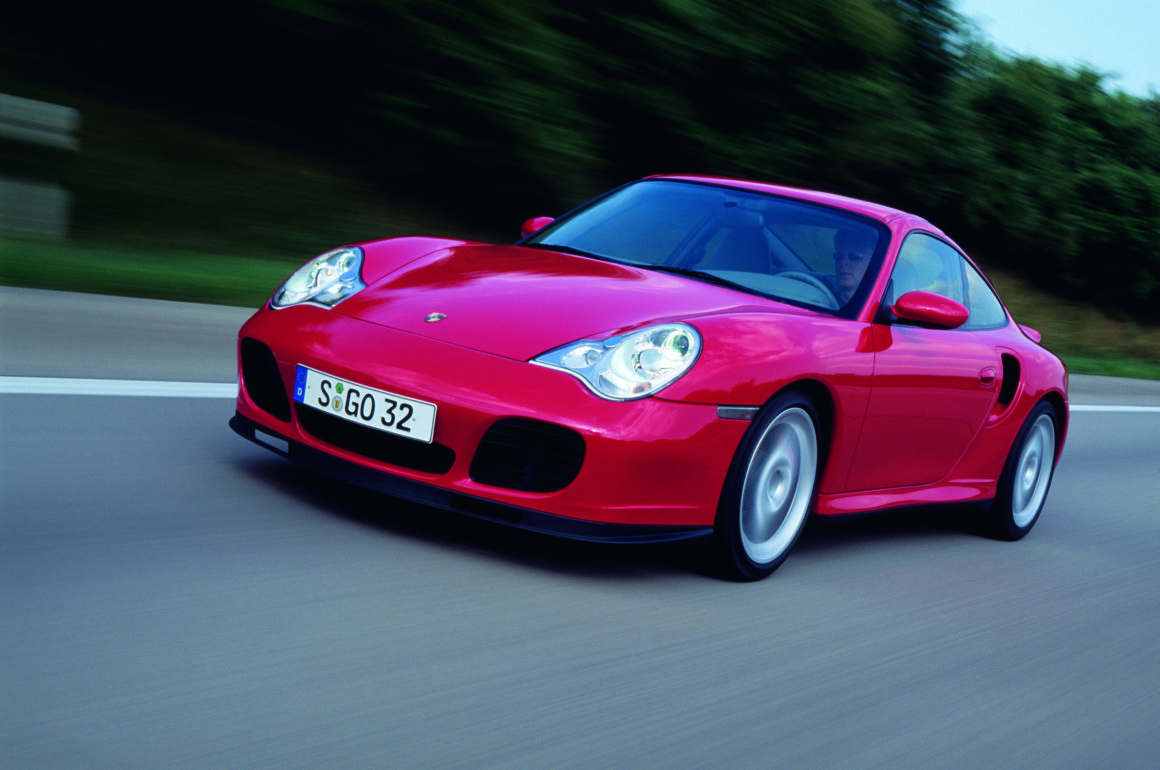


![FullSizeRender[1]](https://luxmagkop.files.wordpress.com/2015/11/fullsizerender1.jpg?w=300)
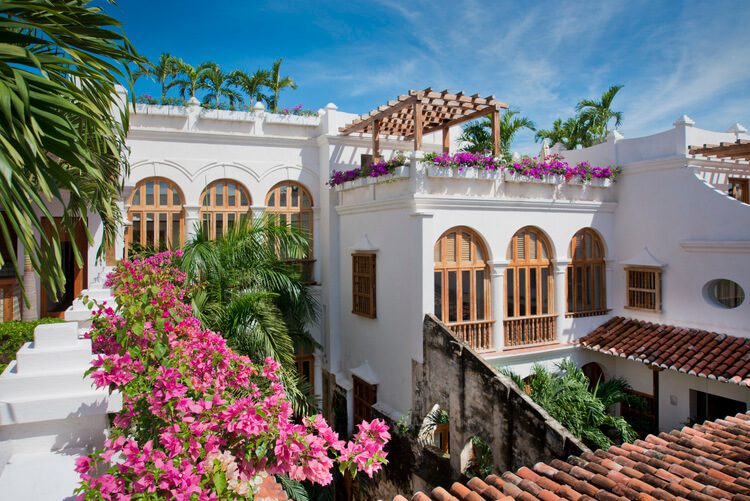

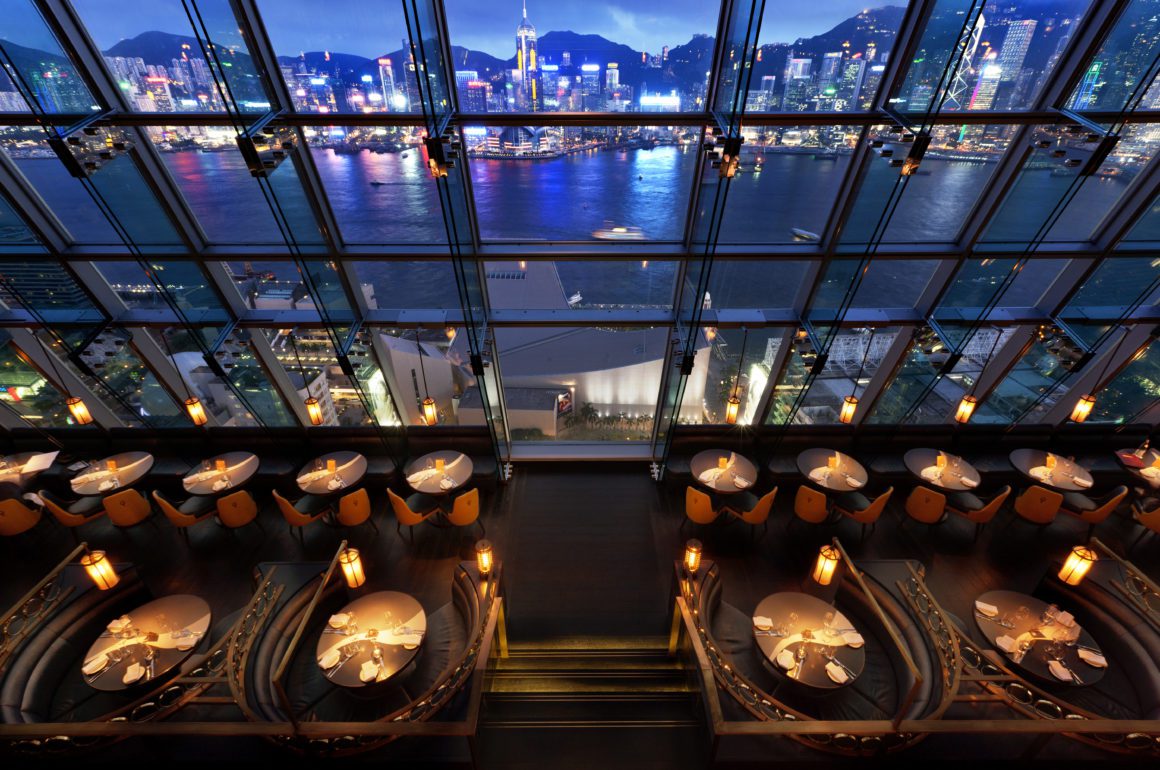




![Barricaia Masseto 1 (media)[1]](https://luxmagkop.files.wordpress.com/2015/09/barricaia-masseto-1-media1.jpg)



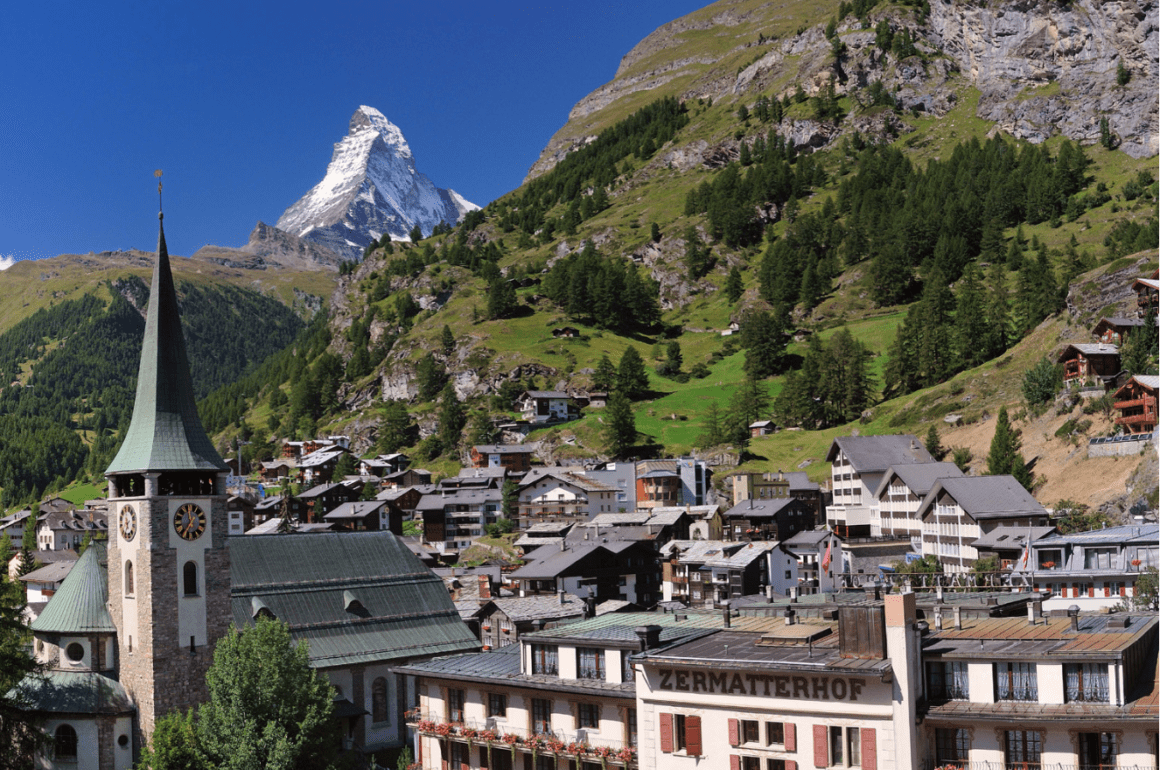








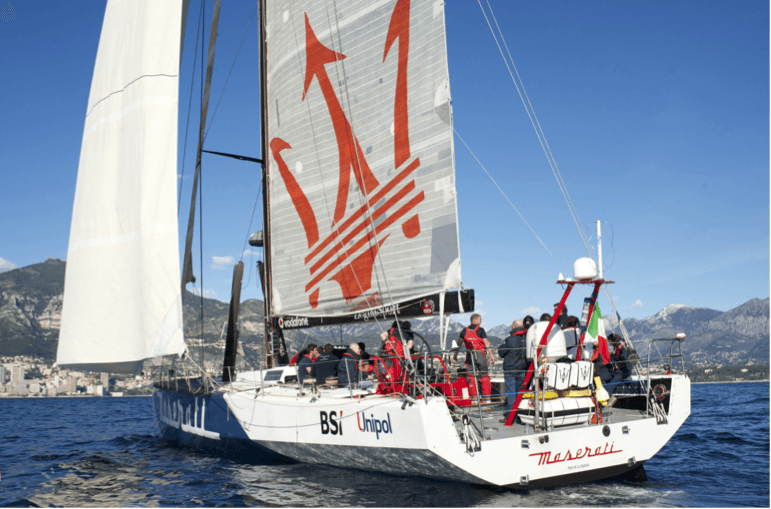




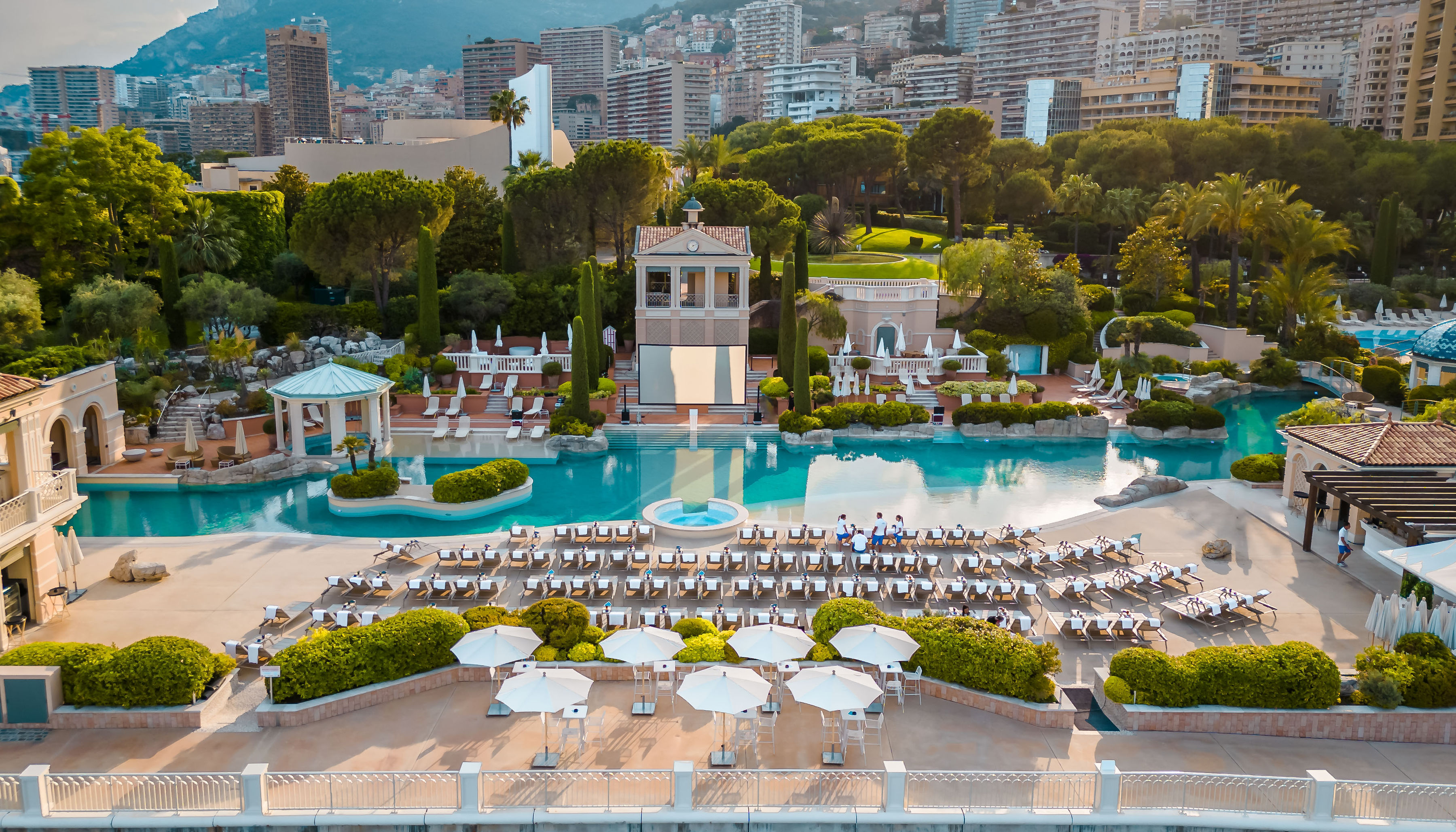

Recent Comments